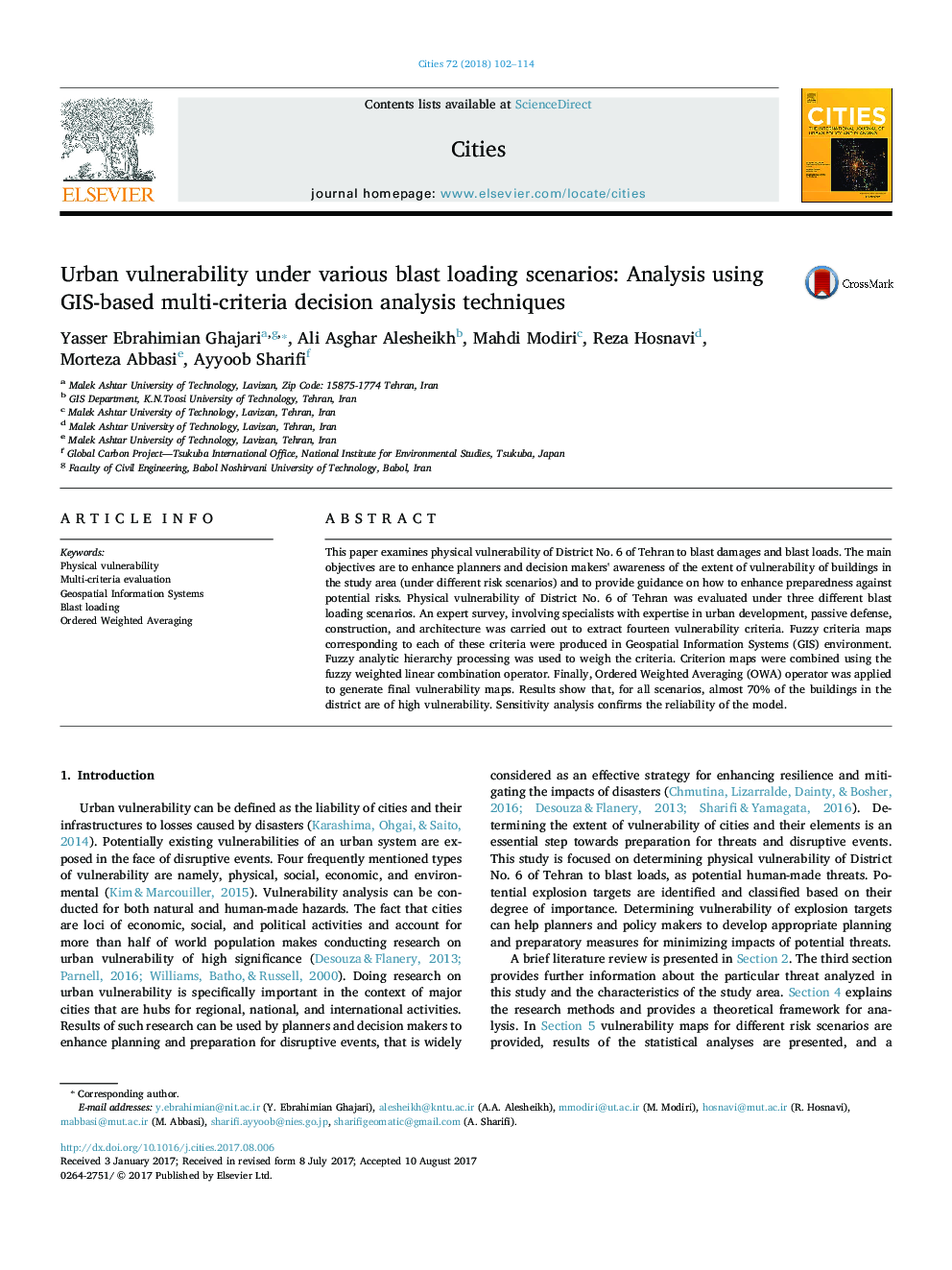| Article ID | Journal | Published Year | Pages | File Type |
|---|---|---|---|---|
| 5107960 | Cities | 2018 | 13 Pages |
Abstract
This paper examines physical vulnerability of District No. 6 of Tehran to blast damages and blast loads. The main objectives are to enhance planners and decision makers' awareness of the extent of vulnerability of buildings in the study area (under different risk scenarios) and to provide guidance on how to enhance preparedness against potential risks. Physical vulnerability of District No. 6 of Tehran was evaluated under three different blast loading scenarios. An expert survey, involving specialists with expertise in urban development, passive defense, construction, and architecture was carried out to extract fourteen vulnerability criteria. Fuzzy criteria maps corresponding to each of these criteria were produced in Geospatial Information Systems (GIS) environment. Fuzzy analytic hierarchy processing was used to weigh the criteria. Criterion maps were combined using the fuzzy weighted linear combination operator. Finally, Ordered Weighted Averaging (OWA) operator was applied to generate final vulnerability maps. Results show that, for all scenarios, almost 70% of the buildings in the district are of high vulnerability. Sensitivity analysis confirms the reliability of the model.
Related Topics
Social Sciences and Humanities
Business, Management and Accounting
Tourism, Leisure and Hospitality Management
Authors
Yasser Ebrahimian Ghajari, Ali Asghar Alesheikh, Mahdi Modiri, Reza Hosnavi, Morteza Abbasi, Ayyoob Sharifi,
